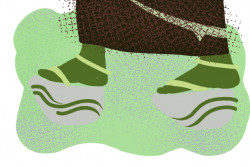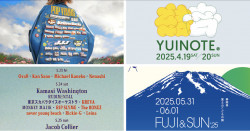
November 11, 2011
Kurobatei
Everything you wanted to know about tuna but were afraid to ask
By Metropolis
Originally published on metropolis.co.jp on November 2011

“So much of tuna is valued as sashimi that over 35% of the fish goes to waste,” says Kurobatei’s chef Hideo Yamada. Son of an expert tuna fisherman, Yamada was brought up eating from the discarded parts of the fish. Though one of the most popular fish in Japan, few people can say they have eaten maguro to the bone. In fact, Metropolis wouldn’t have thought about eating its innards if we hadn’t heard about this fusion restaurant for tuna maniacs.
We traveled for a little over an hour from Shinagawa to Misakiguchi station, the last stop on the Keikyu Main Line. Another 25-minute bus ride took us to a small and tranquil fishing village on the tip of Miura Peninsula in Kanagawa. Many seafood restaurants advertising tuna dishes cluster around Misaki Harbor, Japan’s second biggest in terms of tuna catch. Though it was our first visit, we immediately spotted Kurobatei—it was the only restaurant buzzing with people.

The chef’s repertoire of 200 original dishes was just as unique as his hairdo. Squeamish punters take note that there are plenty of “normal options.” We, however, were more interested in things like tuna stomach (¥525), for the novelty. It resembled mimigaa (Okinawan pig’s ear), but was flavorless except for the taste of the garlic soy sauce into which we dipped it. Then we ordered the “hole in one,” sweet-and-sour tuna eyeball meat topped with deep-fried crunchy socket on a bed of lettuce (¥1,575). Its satisfying presentation, flavor and texture was capped by the intensity of sugar and vinegar.

Although we were quite full after a rice bowl topped with shirasu and marinated tuna (¥1,500), we couldn’t resist ordering the bone marrow (¥735), which came with three golf-ball size vertebrae. We scooped the opaque, gelatinous collagen splashed with ponzu, scraped the meat stuck around the bone, and dabbed it into sumiso (vinegared miso)—a true delicacy. We were amazed by the creativity of each dish and agreed with Chef Yamada that “tuna has no limits.”
Kurobatei turned out to be a perfect daytrip, except we regretted not having larger stomachs to try all the other interesting seafood dishes unheard of elsewhere. For the full experience, it is recommended to reserve, arrive early before they sell out, and go in a large group to sample as much as you can.







